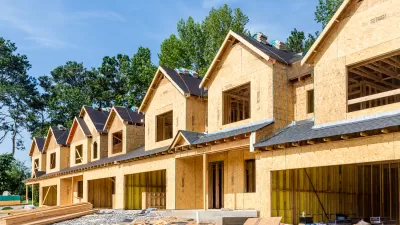The new form of the shopping mall -- lifestyle centers -- are fulfilling the original destiny of the American mall by "re-creating the essence of urban life", writes Virginia Postrel in a Los Angeles Times opinion.
Lage lifestyle centers are serving as defacto urban streets in urban areas such as Los Angeles, writes Virginia Postrel, social critic, author and columnist for the Atlantic. Critics who condemned malls like Los Angeles' often-maligned City Walk as "fake spaces" have turned out to be wrong, and these spaces have become an important part of the city's fabric.
From the article:
"In fact, CityWalk says far more about the state of shopping centers than it does about the state of cities. Over the last decade and a half, the once-monolithic mall has become more diversified, more aesthetically appealing and more porous. Outdoor "lifestyle centers," often without department stores, are reinventing the city street, while traditional malls revamp to provide more entertainment, more restaurants, more appealing public spaces and more reasons to linger. After five decades of experiment and evolution, the American shopping center is finally beginning to fulfill its inventor's dream: to re-create the human-scale European city "filled, morning and evening, day and night, weekdays and Sundays, with urban dynamism."
Peter Gordon comments on the article on his blog:
"Public sector planners go on and on about "the need for open space" -- and about their unique ability to provide it. But they are no match for the private providers. L.A.'s Rick Caruso and his work are noteworthy examples. (He writes "Listen and they will come" in the same section.) We somehow get the open spaces we want in spite of, and not because of, the prominent public sector actors."
Thanks to Peter Gordon
FULL STORY: From shopping centers to lifestyle centers

Pennsylvania Mall Conversion Bill Passes House
If passed, the bill would promote the adaptive reuse of defunct commercial buildings.

Planning for Accessibility: Proximity is More Important than Mobility
Accessibility-based planning minimizes the distance that people must travel to reach desired services and activities. Measured this way, increased density can provide more total benefits than increased speeds.

Fair Housing Cannot Take a Back Seat to ‘Build, Baby, Build’
If we overlook fair housing principles in the plan to build US housing back better, we risk ending up right back where we started.

LA Metro Board Approves New 710 Freeway Plan
The newest plan for the 710 corridor claims it will not displace any residents.

Austin’s Proposed EV Charging Rules Regulate Station Locations, Size
City planners say the new rules would ensure an efficient distribution of charging infrastructure across the city and prevent an overconcentration in residential areas.

Making California State Parks More Climate-Resilient
A recently released report offers recommendations for keeping state parks healthy and robust, including acquiring additional land for conservation and recreation.
City of Costa Mesa
Licking County
Barrett Planning Group LLC
HUD's Office of Policy Development and Research
Mpact Transit + Community
HUD's Office of Policy Development and Research
Tufts University, Department of Urban and Environmental Policy & Planning
City of Universal City TX
ULI Northwest Arkansas
Urban Design for Planners 1: Software Tools
This six-course series explores essential urban design concepts using open source software and equips planners with the tools they need to participate fully in the urban design process.
Planning for Universal Design
Learn the tools for implementing Universal Design in planning regulations.























